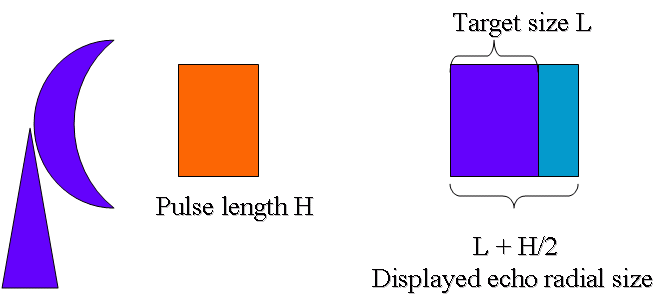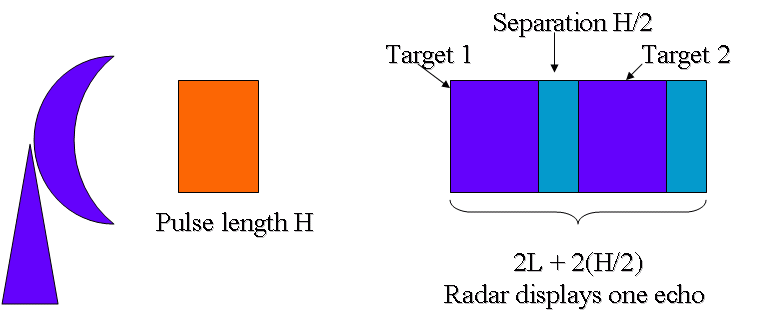Range Distortion
The radar begins to listen for
returned echoes the moment transmission of a pulse ceases. The time
that elapses from this moment until backscattered energy from a target
is first detected by the radar defines the range to the target. As long
as a target is illuminated by a pulse of electromagnetic energy, it
will continue to produce backscattered energy. Therefore, the depiction
of an echo on the radarscope is not only a function of size of the
target, but also of the pulse length, H.
Since the first echo from a target will be from the leading edge of the pulse, this will correspond with the actual target ranges. However, the edge of a target furthest from the radar will continue to back scatter energy until the trailing edge of the pulse passes the target (see Figure 1).
This results in a one-half pulse length stretching of
the target on the side furthest from the radar as illustrated below.
Referring to the various pulse lengths of weather radar you may use, it
is easy to see that stretching, or distortion, of a target by only ½
pulse length is a relatively minor problem.

Figure 1. The finite length H of a radar pulse leads to the radial extent of a target being ‘stretched’ by H/2
Why H/2?
Because it takes (H/2 *2)/C for radar to register the
returned signal for a target of an extra H/2 size given a pulse length
H. At any distance from the radar, the received backscattered radio
signal will have travelled twice the distance between radar and the
target. This means that for a pulse of finite length H hitting a
target, it took an extra time of H/C for radar to receive the last
returned signal of the pulse. This extra time of H/C is supposedly
covering the return trip so it has travelled in a distance of H/2 which
shows as an extension to the target (see Figure 2).

Figure 2. Two targets separated by less than H/2 are displayed as one echo
Due to Range Distortion, two targets separated by less than H/2 cannot
be resolved. Note: You only add H/2 distortion at the LEADING edge of
the target, NOT at the back. Range distortion/resolution is also called
“radial distortion/resolution”.